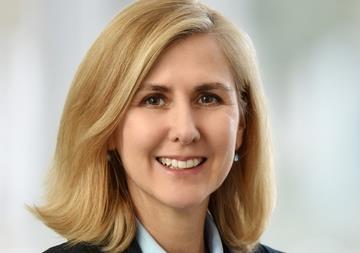Fundamental indices could help mend the mismatch between assets and liabilities. David White reports
Since the perfect storm of 2000- 2002, when both equity markets and interest rates fell, European pension plan sponsors have looked to provide a better match between their plan’s assets and liabilities
In doing so they have been forced to settle for an asset allocation that promises lower returns. The best asset match for a pension fund’s bond-like liabilities is long-dated bonds. But these do not provide the returns a pension fund needs to generate over the long term.
Often pension providers have no choice. Supervisory authorities in Denmark (2001) and subsequently in Sweden (2006) have introduced so called ‘traffic light’ monitoring systems that require pension funds and life and pensions companies to provide regular reports about the sensitivity of their capital to various market shocks.
The net effect has been to compel life and pension companies to buy low-returning bonds and sell high-returning equities.
For their own part, pension funds have looked to new strategies, notably liability driven investment (LDI), to close the asset liability gap. LDI strategies are designed to protect the downside while providing some upside.
Can equities generate returns and resolve the mismatch between a pension funds assets and liabilities? The proponents of fundamental indexes believe they can.
Fundamental indexing, an idea which took off in 2004, is an alternative to capitalisation-weighted indices, where individual components are weighted according to their market capitalisation.
Critics of cap weighting say that it systematically overweights overvalued stocks and underweights undervalued stocks in a portfolio. This results in ‘return drag’.
In a fundamental index, holdings and weights are selected not according to market cap but by using a blend of four fundamental measures of a company’s size - sales, cash flow, book value and dividends.
This, its proponents say, prevents return drag. But it may also increase sensitivity to interest rate movements.
The originator of fundamental index is Robert Arnott, chairman of California-based Research Affiliates. Arnott has developed a family of non-cap weighted indices, Research Affiliates Fundamental Index (RAFI).
He believes that fundamental index could be at least part of the answer to the question - how can equities help mend the asset/liability mismatch?
“It was not part of our original thinking, but we thought ‘wouldn’t it be nice to find a way to earn the premium return while at the same time modestly diminishing the mismatch with liabilities’?”
The characteristics of fundamental indices meet the key requirement of asset liability matching - a sensitivity to interest rate movements.
“With a fundamental index you have the higher yield because one of the constituent drivers of fundamental index is how much does a company pay out in dividends and that creates a bit of interest rate sensitivity,” Arnott says. “So one of the four measures of company size that we use has a sensitivity to interest rates that is quite explicit.
“A fundamental index also has a tie-in to profits, and here there’s a direct link to cost of capital. In contrast, the only link the market capitalisation of a company has to the cost of capital is that fact that if the cost of capital tumbles that often creates a stimulus for equity markets broadly.
“That is a weak link. On average, globally, it’s about the equivalent of two year bond duration and a degree of volatility equivalent to about 20 year bond duration. That implies that only one-tenth of the standard deviation and one-hundredth of the variance is due to interest rate risk.”
The suggestion that equities in a fundamental index can help mend the asset/liability mismatch was tested in a study by Boualem Djehiche and Jonas Rinné of IPM Informed Portfolio Management in Stockholm in 2006.
They compared the fundamental index approach of RAFI with the cap-weighted approach of the S & P 500 to assess each equity portfolio’s interest rate sensitivity and liability hedging characteristics in the US, Japan, Sweden and Europe over the past 35 years.
Djehiche and Rinné looked at two things. The first was correlation with government bonds in world markets. The higher the correlation, the greater the improvement would be to asset/liability matching
The second was empirical duration, a measure of price sensitivity to interest rate movements. For small interest rate changes, the duration is the approximate percentage that the value of the asset will fall or rise for a 1% increase or decrease in interest rates.
The results (see table) show that in the US market, for example, the RAFI displayed a higher correlation to US Treasury bonds (0.32 compared with 0.23) - half as much again - than the S&P 500.
The RAFI also showed a longer empirical duration to US Treasury bonds than the S&P 500 - 3.6 years compared with 2.5 years - almost half as much again.
“The average across the world is almost a one year increase in duration Just by shifting your frame of reference from cap-weighting to a fundamental index, you can add one year to your duration,” says Arnott.
Arnott suggests that the shift from cap-weighted to fundamental indices can improve the risk/reward profile of a pension fund with a portfolio of 60% stocks and 40% bonds.
“In the classic risk/reward picture of the past 10 years, the S&P 500 has shown an annualised return of 6% and a standard deviation of returns - risk - of 15% over the past 10 years to June 2007,” he points out. “An investor with a 60:40 portfolio using a fundamental indices would have been able to increase the return by almost 2% and reduce the risk by 0.5%.
For liability-adjusted returns over the same period, annualising to a real return stream, the S&P500 return remains 6% but the risk rises to 17%. Here, the improvement is even better, he says. “The path of the 60:40 fundamental portfolio not only sees nearly 2% increases in return over this span, it also sees a 1% reduction in risk.
“So the modified Sharpe ratio, where you are looking at incremental return relative to T-Bills for each increment of risk relative to T-Bills, literally doubles. This is something that can be very powerful in helping a pension fund mend its asset/liability mismatch.”
The IPM study demonstrated that the RAFI indices improve the link between assets and liabilities, with “materially higher” returns, Arnott concludes.
How would this work in practice? To test this, Djehiche and Rinné carried out a dynamic ALM exercise for an open pension fund where the sponsoring company aimed to cover half the new liabilities each year with contributions and half with asset returns above the liability discounting rate.
The pension fund would be subject to a minimum solvency level of 115%, and would be required to pass ‘traffic stress tests similar to those in Denmark, Sweden and the Netherlands. The analysis covered the periods 1980 to 2005 and 1990 to 2005.
The results show that the funding levels between 1980 and 2005 vary significantly depending on whether the pension fund invests in a combination of government bonds with a cap-weighted equity index or a fundamental index.
If the notional pension fund had used a mix of US Treasury bonds and the S&P500, its solvency ratio would have risen to almost 200% at the top of the bubble in 1999, and fallen to around 100% at the bottom of the bear market in 2002, rising modestly to 120% by 2005.
However, if the fund had used a mix of US 30-year Treasury bonds and the RAFI 1000, the ratio would have moved to 230% at the top of the bubble in 2000, and then fallen to 150% at the bottom of the bear market in 2002 re-bounding to 165% by 2005.
The impact of cap-weighted equity indices on contributions is also significant in the period 1990 to 2005. If the pension fund had invested in bonds plus the RAFI, the plan sponsors would have met their target contribution levels. However, if the fund had invested in bonds plus the S&P500, the plan sponsors would have had to make additional contributions, with an increase ranging between 91% and 183% of the agreed size.
Arnott suggests the results are conclusive and should change the way pension funds look at the role of equities within their asset/liability matching strategies: “In the past when people wanted to decrease the asset/liabilities mismatch, the tools at their disposal were ‘move more into bonds, move the duration up.’ And that meant, and they knew full well it meant, lower returns. Now there’s an option that has a better return and a better asset/liabilities fit.”












No comments yet